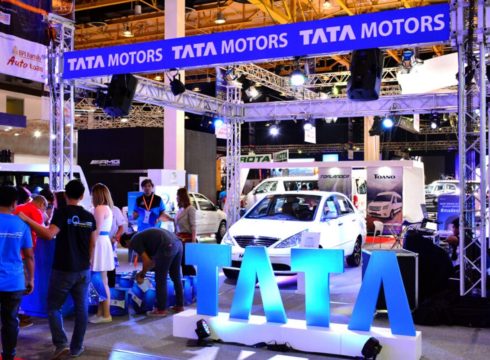Tata has launched EVs in both personal and shared mobility segment
Tata introduced Ziptron EV technology to improve efficiency
Mahindra plans to stay focused at shared mobility segment
Inc42 Daily Brief
Stay Ahead With Daily News & Analysis on India’s Tech & Startup Economy
With the launch of its newest electric sports utility vehicle (SUV) Nexon, Tata Motors has marked its entry into the personal mobility segment with the hope of becoming the largest player in the shared mobility and EV market. The company is also planning to launch more EVs in the personal mobility segment in the near future.
Speaking to PTI, Shailesh Chandra, the president of Tata Motors’ electric mobility business, said, “As far as Tata Motors is concerned, we want to establish ourselves as leaders in the EV space. We have taken up the mission that we should be ahead in terms of EV technology.”
Previously, Tata Motor’s EV catalogue was limited to Tigor, which was launched in March 2017, to be a part of government’s fleet. In October 2019,the company also updated the Tigor EV by extending its range up to 213 Km and the vehicle was reintroduced for shared mobility.
In December 2019, Tata also scored a contract with Delhi-based mobility service provider Prakriti EMobility and Bengaluru-based B2B fleet providers Lithium Urban Technologies to infuse the updated Tigor in their fleets.
Chandra also noted that Tata Motors has a clear distinction between the needs of customers using EVs for personal and commercial use. Therefore, the company will come up with different solutions for both the users. Moreover, Tata Motors also plans to build complete in-house capabilities in terms of design, supply chain and full local manufacturing for EVs.
Tata Motors’ EV Roadmap
As one of the biggest players in the internal combustion engine (ICE) vehicles market in India, Tata Motors plans to carve out a big lead in the EV market as well.
Chandra said, “As an Indian OEM [original equipment manufacturer], we should be seen as a very strong brand in the EV space. Here we are not dealing with 70 years old ICE world. We are not catching up. Here, let others catch up with us, that is the thinking.”
To improve on its EV capabilities and technology, Tata Motors launched a Ziptron power train in September 2019. The technology comprises a “highly” efficient permanent magnet alternating current (AC) motor. The technology will be used to power all Tata EVs and was also used in Nexon.
With this technology, Nexon’s three variants — XM, XZ+ and XZ+ LUX — are equipped to travel up to 300 Km on a single charge on a modified Indian driving cycle (MIDC). Moreover, Nexon can catch up to 60 Km per hour in 4.6 seconds and 100 Km per hour in 9.9 seconds from 0 Km per hour.
Moreover, Tata is also planning to manufacture an electric variant of its newly launched hatchback Altroz. Chandra added, “Alfa architecture is protected for electrification. Every product on this platform will be a target for electrification. Altroz is the next target for us, that is the next project we are working on.”
Tata Motors has also requested the government to give incentives for private electric four-wheelers to push demand even further. “We [Tata Motors] expect fourth quarter to be double of third quarter due to the recent product launches…the perception that it (EV) space is only going to be limited to the fleet segment will not be the case with many launches expected in the personal space,” he noted.
Mahindra Tries A Different Approach
While Tata Motors has decided to go after the private segment, Mahindra and Mahindra has decided to stay focussed on the shared mobility segment. Pawan Goenka, managing director of Mahindra, previously said, the time for electric vehicles has finally arrived and that EVs have already taken off in the shared mobility space.
He noted that due to affordability questions and range anxiety among consumers, Mahindra will be focusing on introducing more EVs in the shared mobility segment. Its lineup includes an electric version of its KUV sports utility vehicle (SUV) and ATOM Electric for shared mobility fleet. KUV Electric will be showcased at the Auto Expo of 2020, whereas ATOM is expected to be launched in the third quarter of FY21.
Moreover, the company will be launching only one EV for private use called XUV 300 to mark its entry in the consumer segment.
Note: We at Inc42 take our ethics very seriously. More information about it can be found here.


